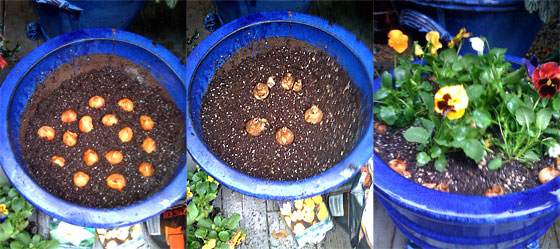Here in the Pacific Northwest, autumn is certainly here. Temperatures are cooler, rains have begun (hopefully not continuously), and plants are beginning to show signs that their season is over. This is a wonderful time to visit an arboretum, if you have one, and absorb some of the fall colors. It is also an opportunity to visit your local garden center and see what is still looking good. You might be surprised at the color awaiting you even at this late date.
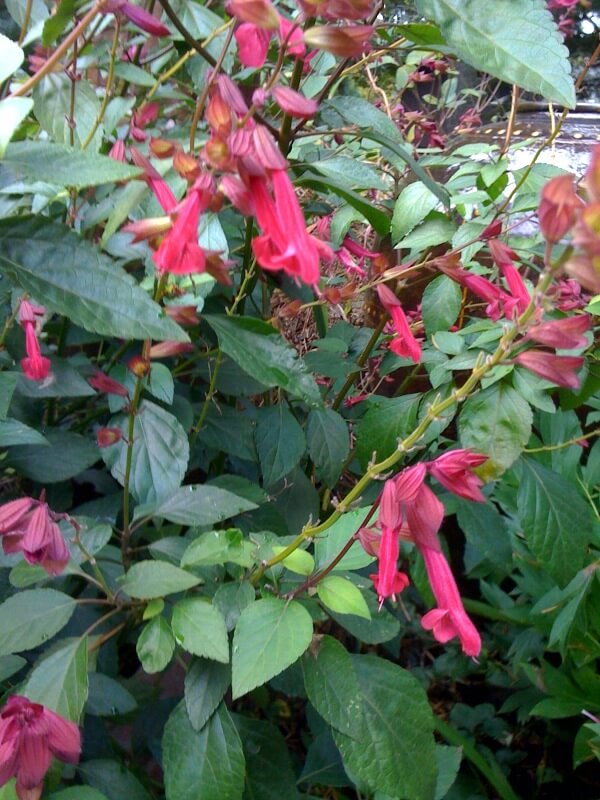 Salvia
Salvia
In my own garden, several plants are putting on a wonderful show of color. I am always interested in trying new plants and a new Salvia for me this year was ‘Wendy’s Wish’. With a flower color that is hard to describe, I would call it a deep rose (see photo), this has been in bloom in my garden all summer and has shown no signs of stopping. I have it growing in a pot in almost full sun and it is a hummingbird magnet.
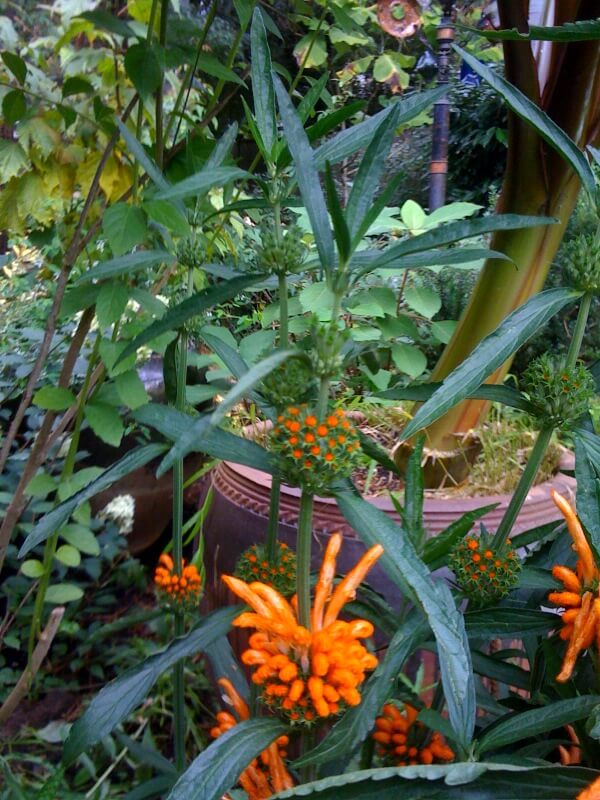 Lion’s Tail
Lion’s Tail
A plant that is usually treated as an annual here and does not come into flower until late August or September is Leonotis leonurus (Lion’s Tail). As I am writing this (October), it is in full bloom with more flower buds ready to open. The flowers appear on long stems in whorls with the lower whorls opening first and then continuing upward. The flowers are covered in a sort of furry coat of fine hairs and are a rusty orange. Because of the color, this is a great flower for fall Halloween arrangements. Give it sun and plant toward the back of a flower bed since plants can reach 6 feet in height.
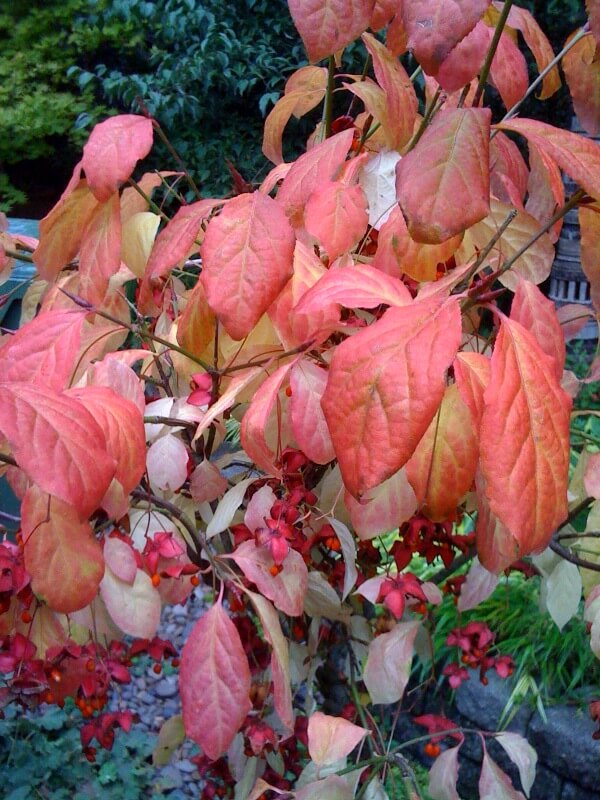 Spindle Tree
Spindle Tree
For autumn color from a tree, I was recently given a spindle tree (Euonymus planipes) and the leaf color is astounding (see photo). In addition to the spectacular leaves, there are deep rose-colored fruits opening to reveal orange seeds. Quite often the leaves will drop leaving the fruits against the bare branches. This is a small tree/large shrub, very easy to grow, and I would suggest planting it where you can enjoy the fall colors as the spring flowers are not particularly showy and the real beauty is this time of year.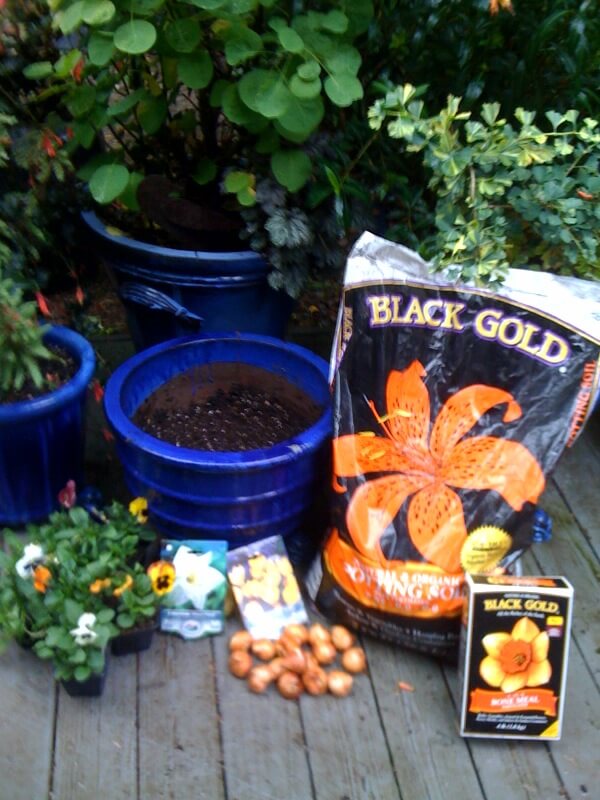
Potted Spring Bulbs
In addition to enjoying what is around us, we should be thinking ahead to spring. A great idea is to plant bulbs in a pot and ‘layer’ them, then plant winter blooming pansies on the surface. While this might sound difficult, it is not. What you will need:
- Outdoor pot
- Black Gold Natural & Organic Potting Soil
- Bulbs (tulips, daffodils, hyacinths, crocus)
- Black Gold Bone Meal
- Pansies
When purchasing bulbs, be sure to buy a large size and press each one before planting to make sure it is firm and not soft. Bulbs can be placed quite close together; just do not let them in direct contact with each other. This is in case one would rot and by not having them in contact, the rot would not spread to the others. Most of the spring blooming bulbs; tulips, hyacinths, daffodils, crocus, etc. are quite winter hardy and will survive being outdoors in a container. Make sure the pot is in a location where it will get rain.
Start by adding 5-6 inches of Black Gold Natural & Organic Potting Soil. Add bone meal and mix together with the soil. Then add tulips. In the example shown, I used red tulips. Then cover with soil and mix this new soil with bone meal. Then I added white daffodils. Cover these and then plant something that will give color during the winter. In my example, I used winter pansies. As you can see from the photo, they are in bloom and will continue flowering all winter. Then around the inside rim of the pot, I planted a circle of crocus.
 The combination of bulbs to use is endless. You could easily add a layer of hyacinths or multiple layers of tulips. If using tulips, check the package information and get several different blooming dates. For example, the package should indicate if the particular tulip is early, mid-season, or late. Having some of all three will extend the blooming season in the spring. If pansies are not your choice, ornamental winter kale and/or ornamental cabbage are other options for providing color during the fall season.
The combination of bulbs to use is endless. You could easily add a layer of hyacinths or multiple layers of tulips. If using tulips, check the package information and get several different blooming dates. For example, the package should indicate if the particular tulip is early, mid-season, or late. Having some of all three will extend the blooming season in the spring. If pansies are not your choice, ornamental winter kale and/or ornamental cabbage are other options for providing color during the fall season.
This idea of ‘layering’ is also a great project to do with children. They can help mix the soil, plant the bulbs (and learn that flowers come from bulbs) and then plant the pansies.
Do not wait too long before checking out your local garden center for fall color, or tending to your fall planting. Once we have a frost and cold weather, many plants will lose their leaves and you will not be able to see them in all their autumn glory will be lost for another year.


